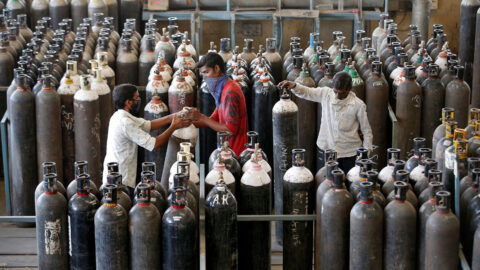
By 2035, the world will have 14 more megacities, according to the United Nations. Most of the new ones will develop in Africa and Asia. The concentration of wealth and technology within metropolitan areas means cities everywhere could lead the way in addressing climate change.
Methodology
The population data for 2020 and 2035 was sourced from the United Nations, Department of Economic and Social Affairs, Population Division (2019). World Urbanization Prospects: The 2018 Revision.
The carbon footprint per capita data was sourced from Moran, D., Kanemoto K; Jiborn, M., Wood, R., Többen, J., and Seto, K.C. (2018) Carbon footprints of 13,000 cities. Environmental Research Letters DOI: 10.1088/1748-9326/aac72a.
We found the global carbon footprint for each city by multiplying carbon footprint per capita data from Moran et al. by the population data provided by the United Nations.
When interpreting the results, please keep in mind the limitations of these studies and methods; the numbers are not perfectly accurate but allow us to identify and analyze trends.
Photography credits: Getty (NYC, High Line, Shenzhen); Alamy (Kinshasa); Shutterstock (Osaka)





Recent Comments